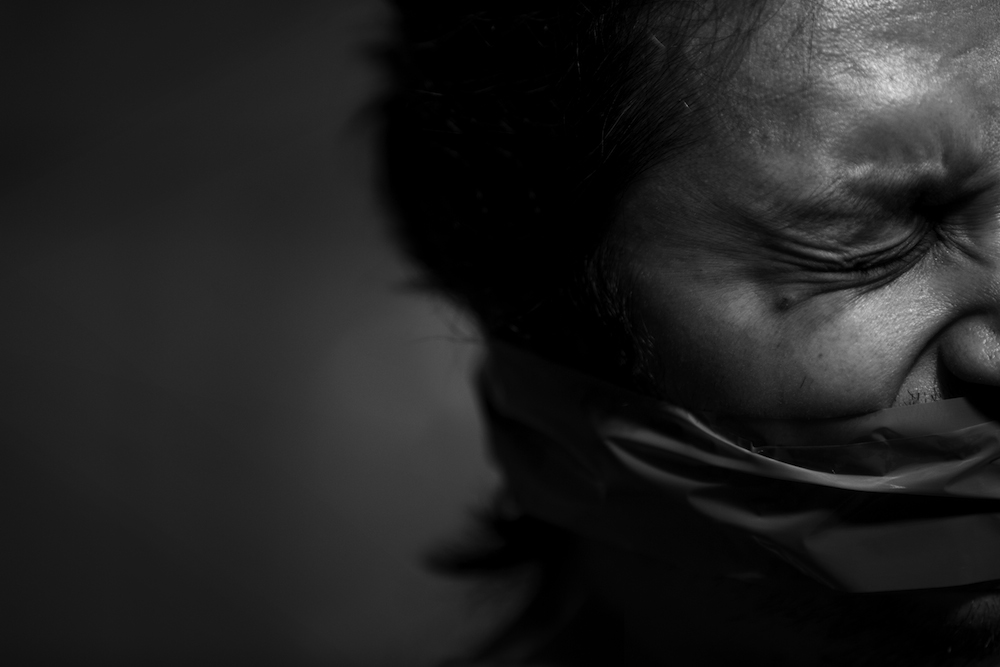
Anyone arrested on suspicion of criminal activity in the Philippines risks being tortured or ill-treated in police custody. Many victims are children and almost all are from poor and disadvantaged backgrounds.
Nerve Macaspac, Country Specialist for the Philippines, Amnesty International USA
Torture not only remains prevalent in the country but has also become a form of entertainment for its police.
In January 2014, Amnesty International revealed the discovery of a secret torture cell in a police intelligence facility in Laguna, Philippines.
While the existence of such spaces in the country has been documented in testimonies of torture survivors including Filipino farmer Raymond Manalo in 2006 and Filipina-American university student Melissa Roxas in 2009, what was shocking this time around was the discovery of a “wheel of torture.”
In a game of “roulette,” police officers physically abuse criminal suspects using a wheel painted with a range of torture practices:
Spin the wheel and land on “30 second ‘Paniki’ (Bats)” and a suspect is hung upside down like a bat for 30 seconds.
Land on “20 second Manny Pacman” and a suspect is punched non-stop for 20 seconds.
Other torture positions include: “3 minutes Zombies,” “20 second ‘Tusok Ulok Ka’ (Poke Your Head),” and “30 second Duck Walk Ferris Wheel.”
If by literally a very slim chance of luck the wheel lands on a tiny slice in the wheel that reads ‘Hayahayyy,’ a suspect is given a break.
Watch and share the “Torture: More ‘fun’ in the Philippines” video.
In The Body In Pain, Harvard University professor Elaine Scarry (1985) reminds us that a torture room is not merely a place where torture occurs. It is also a weapon and agent of pain. So too are all the things in that room.
The “wheel of torture” points to a tragic and horrifying reality of Philippine democracy where pain, suffering and denial of justice among those governed have been sources of enjoyment, laughter and entertainment of the country’s ruling elites.
Torture is illegal in the Philippines. President Noynoy Aquino signed the Anti-Torture Act, which affirms the Philippine government’s commitment to international prohibition against torture or other ill-treatment.
But five years since the law was passed, not a single official responsible for torture has been convicted.
Worse, police officers continue to practice electrocution, waterboarding, and other physical and mental abuses as methods to extract confessions from criminal suspects including Alfreda Disbarroand Jerryme Corre.
And with torture being a form of entertainment, one can’t help but wonder if the President and police officials can ever get “serious” about ending torture when torture is more “fun” in the Philippines.
Tell President Noynoy Aquino that torture is not a laughing matter.
Take action now.
Sign the petition to Stop Torture in the Philippines.
Opinions expressed in this blog do not represent or reflect official positions of Amnesty International.
#stop torture in Phillipine
We need to fight again torture. it is very painful thing in life.
thank you for sharing.
See! Its not just the US that use torture!
Very sad and disheartening . Thanks to this blog , we can know good hand what is happening in countries to which the Western media have turned their backs .
Torture is very bad thing in life. it just very bad for environment.
thank you for sharing with us.
Poor…
Great post
Thanks for informative submit. i'm pleased certain this put up has helped me store many hours of surfing other comparable posts just to find what i was searching out. I bookmarked this blog some time ago due to the useful content and i'm never being disenchanted. preserve up the coolest paintings simply I want to mention: thank you!
Great article
This is bad!
Good
(Jesus) Eu sou a verdade e a vida, quem vem a mim, vem ao pai